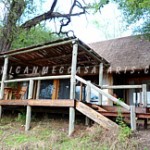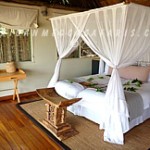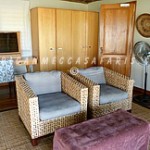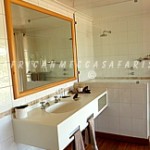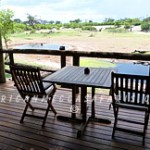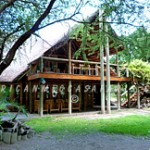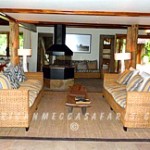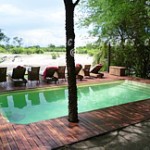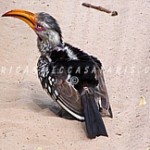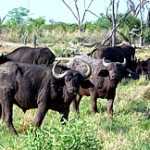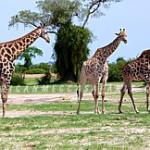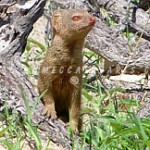Understand Safari Tier Ratings & Experiences In Botswana | Why Visit Botswana For Your Safari Vacation Or Holidays In Africa
OVERVIEW ON SAVUTE SAFARI LODGE IN SAVUTE
Situated on the banks of Botswana’s fabled Stolen River, Savute Safari Lodge is a traditional thatched safari lodge in a setting of singular beauty. To ensure a private and relaxing environment, Savute Safari Lodge accommodates just 24 guests in twelve local timber and thatched chalets. The chalets have been elegantly furnished in calm neutral tones to compliment the natural environment and feature expansive private decks, a combined bedroom and lounge area plus en-suite facilities. Sink into one of the numerous comfortable leather, wood or wicker sofas in the lounge – and library – or sip a cocktail in the stylish bar, all of which are situated in a beautiful two-storey thatch and timber main building. Savute Safari Lodge boasts a shaded viewing deck, al fresco dining area and swimming pool with spectacular pool loungers – ideal for watching the varied wildlife – and the resident elephants – as they make their way to the Savute Channel to drink, bathe and play.
CONTACT AN EXPERT TO PLAN YOUR BOTSWANA SAFARI
Location Of Savute Safari Lodge
Savute Safari Lodge is located in the south west of Chobe National Park. It lies on a vigorous wilderness, a extensive span of savannah brooded over by several rocky outcrops which guard a remnant Savute marsh and the Savute channel. But just as awe-inspiring is the decades old story of how the river was stolen… and in an unexpected twist, how it was given back. Stretching from the waterways of the Linyanti all the way to Savute Marsh, the winding waterways of Savute Channel have pumped life into the western section of Chobe National Park for many thousands of generations. But this fickle and unpredictable channel has a fascinating history of flooding and drying up independently of good rainy seasons and flood levels elsewhere – a mystery that has intrigued geologists and other researchers for many years. When David Livingstone discovered the Savute Channel in 1851 it was flowing. Thirty years later the channel had disappeared and the Savute Marsh had dried out, remaining this way for almost 80 years. It flowed again in the late 1950s, continuing until the early 1980s when it again receded, gaining the channel its reputation as ‘the river which flows in both directions’. In 2009, after another extended hiatus, the channel began flowing again and by January 2010 had spilled into the Savute Marsh for the first time in three decades. No-one knows how long the water will remain…
Safari Experience At Savute Safari Lodge
In 2008, the Savuti Channel once more became a deep, clear waterway harbouring hippo and aquatic life with myriad varieties of waterbirds. Wildlife, from plains game to predators, has had to adapt to a new source of water and all the opportunities and menaces it has brought with it. And how long will it be before the water dries up again? Judging from historical records it could be more than a hundred years or less than ten. Nature has the say in such matters. The dead Camelthorn trees on the Savuti Marsh have became one of the most prominent features of the landscape – skeletons of dead trees, drowned in the waters at least 40 years ago. The shallow basin of the Mababe Depression is now the waterless bed of an ancient lake and the marsh itself is grassland that is the home to large numbers of different animals. The western edge of Savuti comprises the Magwikhwe sand ridge, which is approximately 100 km long and 20 m high. This is the shoreline of a super-lake that once covered most of Northern Botswana. It is hard to imagine that this harsh dry landscape was once submerged under an enormous inland sea. Another part of the Savuti is characterized by the Gubatsa Hills which were formed millions of years ago during volcanic movement. These hills rise to about 90 meters high out of a completely flat landscape.
Much game passes through Savuti on annual migrations between Botswana’s dry interior and the rivers of the north and west. Zebra visit in large herds, accompanied by impala, wildebeest giraffe, tsessebe, buffalo and elephant. Most animals head for open plains to the south and east of the Chobe National Park during the green months (December to March). Gradually, from April to November, as the land dries out and the heat builds, they migrate back to rivers in the north and west. Some animals maintain permanent territories in Savuti. Leopards are seen around the granite kopjes and packs of spotted hyena and prides of lion are notoriously large. Old bull elephants are always found in the Savuti area. Activity often happens around Savuti’s three waterholes, and in the last few years the lion here have made a specialty of killing sub-adult elephants. The Savuti area offers great game viewing at certain times of the year. The annual zebra migration is followed by large concentrations of lion. Good sightings of cheetah and leopard are possible and the endangered wild dog also occurs here. Savuti is famous for its large concentrations of elephants that congregate around the waterholes. This makes game-viewing exceptional and hides at waterholes is also a special feature of this area.
Birdlife is also amazing with large secretary birds and kori bustards often seen around the Savuti Marsh. Summer migrants and water birds include Abdim’s Storks, Carmine bee eaters, fish eagles, quelea finches. A spectacular sight is the redbilled queleas that gather in their thousands. The rainy season falls between November and April, which is during the summer months. The wildlife moves towards grassy areas during this time. During November/December, thousands of Zebra migrate from the Linyanti in the north to the south of Savuti in order to graze in the grasslands of the Mobabe Depression. During the summer months, the humidity and heat is very high. The dry season is during the winter months, May to October. The water pans that filled up during the rainy season are now dry and the animals venture towards the man-made waterholes. During the months of September and October, the temperatures can be extremely hot. This makes for excellent game viewing experience on your Botswana Safaris as the predators are concentrated around the watering holes.
CONTACT AN EXPERT ON SAVUTE SAFARI LODGE PRICES & SAFARI
Activities At Savute Safari Lodge
Activities are centered around game drives throughout the Savute area in open 4×4 safari vehicles. Many trips will incorporate a visit to the Savute Marsh for your chance to see the historic presence of the Savute Channel at the marsh against a teeming backdrop of wildlife. Guests will also enjoy a visit to the ancient San rock paintings at Gubatsa Hills – a small hilly outcrop which forms a remarkable landmark in the otherwise flat landscape. Savute lays claim to the second biggest summer zebra migration in Africa, which is determined by the rains but usually occurs between November and December and again between February and April when the zebras move from the rivers in the north in search of the rain-ripe grasslands and full waterholes in the southeast of the park. Often followed by a myriad of predators, the zebra migration is a must for visitors.

